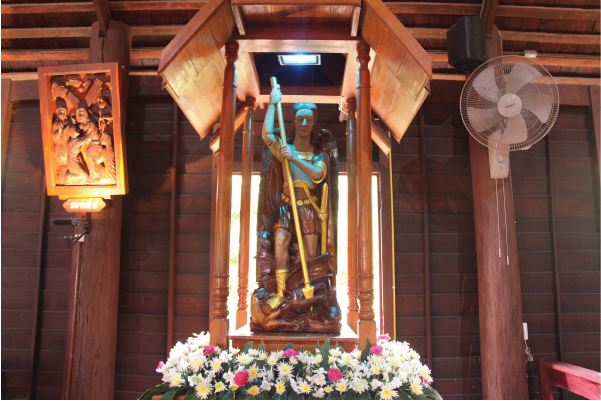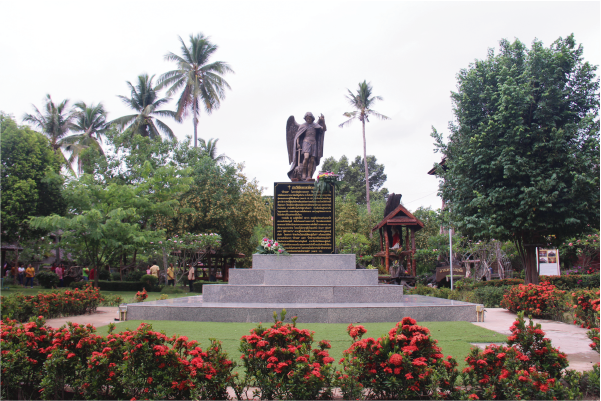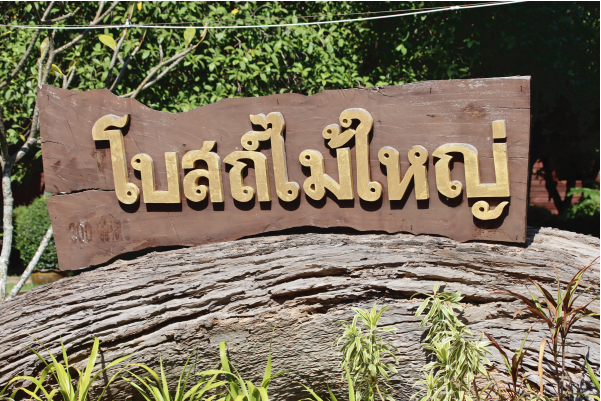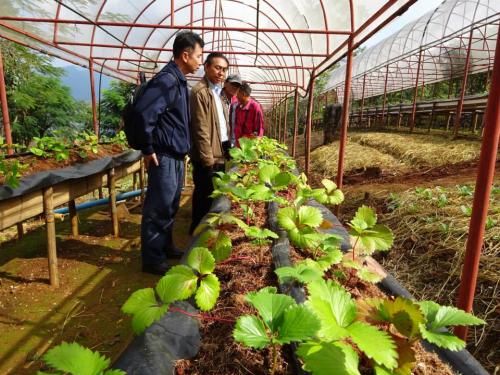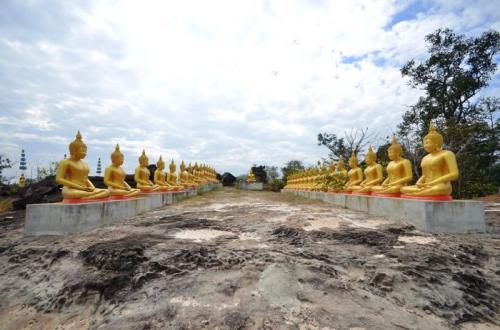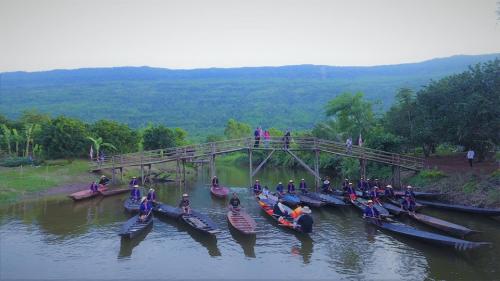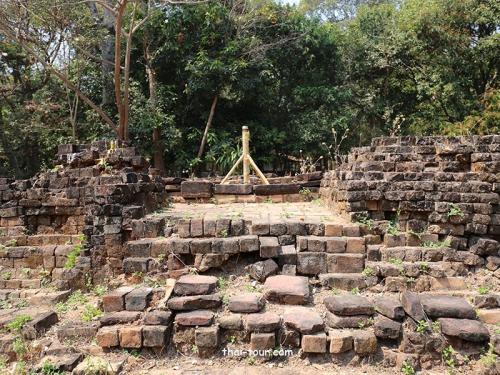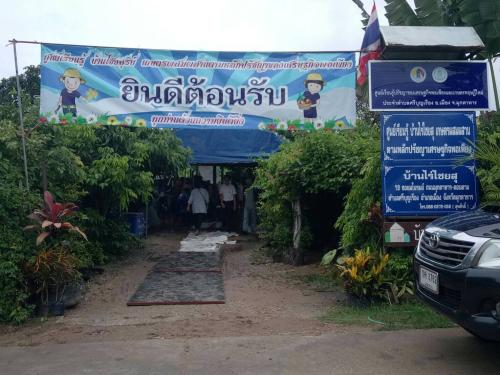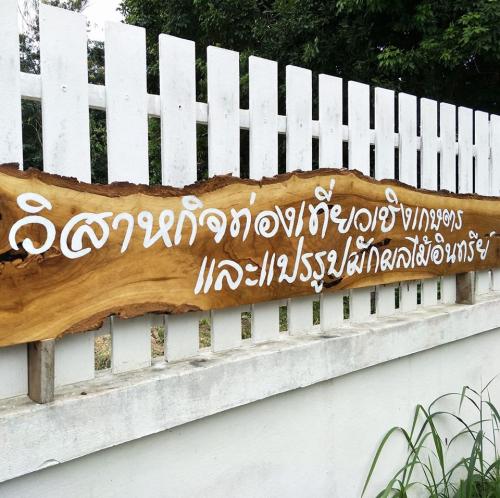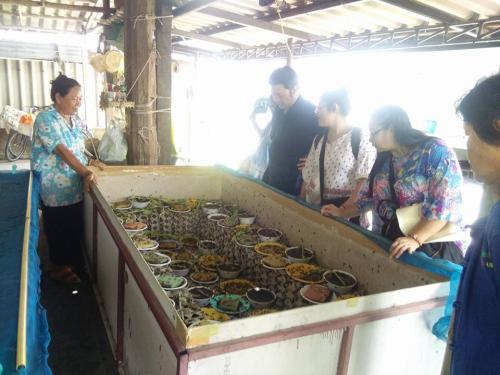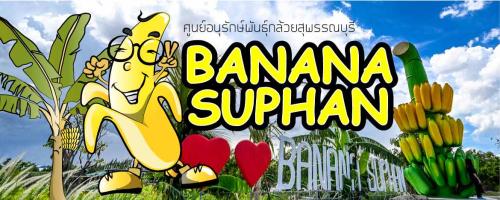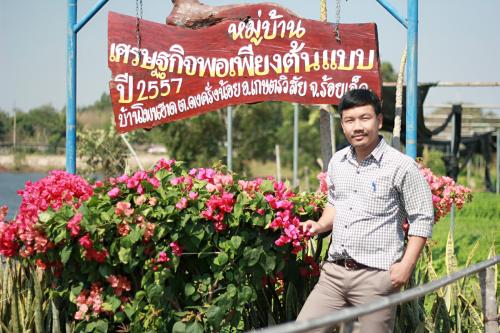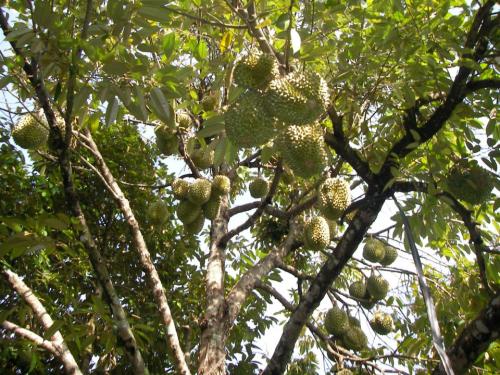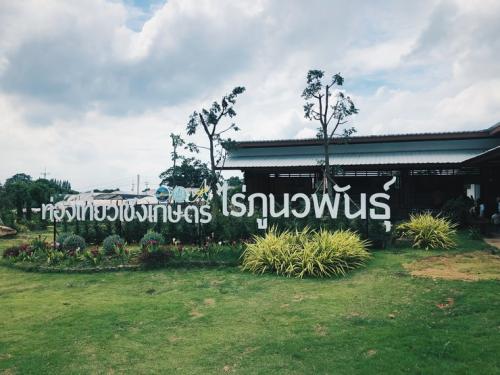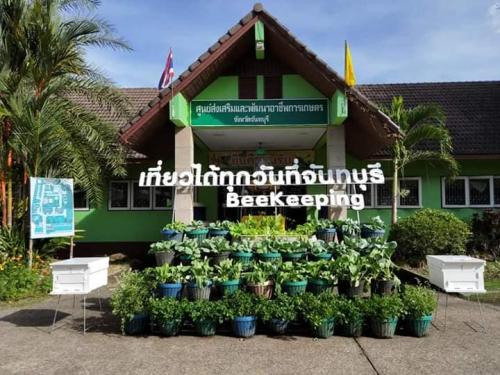Weather
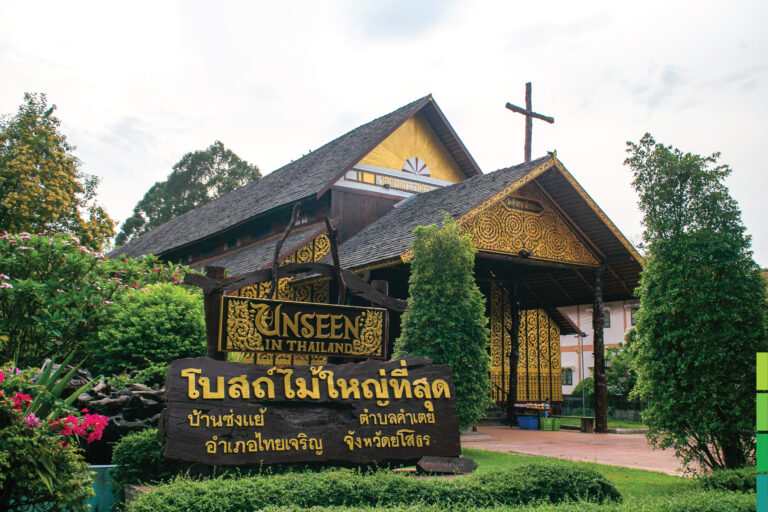
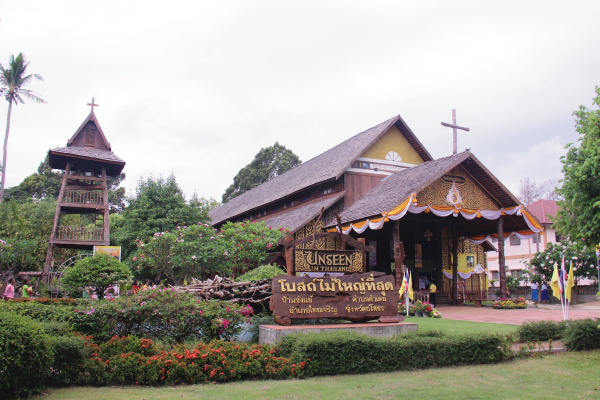
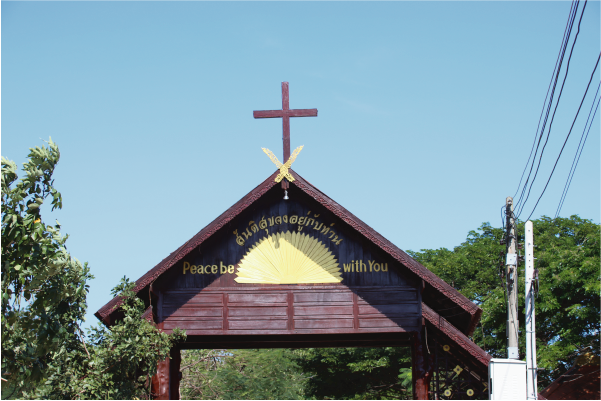
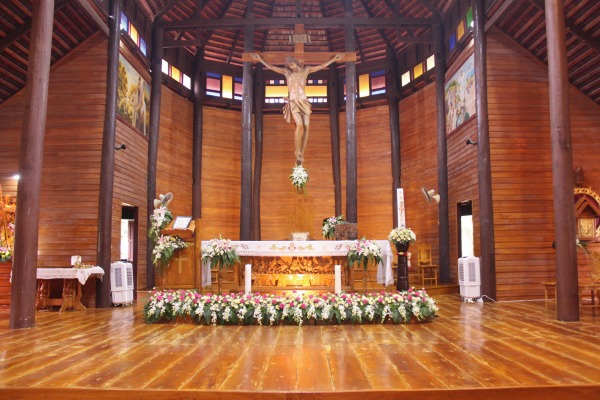
Closed
Business hours
• Sunday
: 09:00 - 16:00
• Monday
: 09:00 - 16:00
• Tuesday
: 09:00 - 16:00
• Wednesday
: 09:00 - 16:00
• Thursday
: 09:00 - 16:00
• Friday
: 09:00 - 16:00
• Saturday
: 09:00 - 16:00
Note
: -
Map
Review Score
0
Information
Ban Song Yae Christian Church is located in Thai Charoen district, Yasothon. There is a history in 1908 that there were 5 families who fled from different places to live in this area, they fled for the same reason, which was accused being ghouls and they were therefore attacked and drove away.
It is the 4th church, planned for construction in 1936. Villagers gathered wood and built it in 1947. The shape of the church was built in Thai art style, width 16 meters, length 57 meters. It is the largest in Thailand, using 80,000 wooden planks as roofing boards, using 360 columns of different sizes, mostly wooden poles. The pillars in the middle row are the largest and longest with 260 trees, more than 10 meters high from the ground. The floor planks are of red wood and large Takhian wood. The wooden bench can hold over a thousand people.
The church bell has a diameter of almost 2 feet in a tall bell tower built in the style of a bell tower in typical Thai temples. But strange that it is separate from the church and because the wood that has been gathered is a lot Therefore, the remaining wood was used to build Ban Song Yae Pittaya School.
It is the 4th church, planned for construction in 1936. Villagers gathered wood and built it in 1947. The shape of the church was built in Thai art style, width 16 meters, length 57 meters. It is the largest in Thailand, using 80,000 wooden planks as roofing boards, using 360 columns of different sizes, mostly wooden poles. The pillars in the middle row are the largest and longest with 260 trees, more than 10 meters high from the ground. The floor planks are of red wood and large Takhian wood. The wooden bench can hold over a thousand people.
The church bell has a diameter of almost 2 feet in a tall bell tower built in the style of a bell tower in typical Thai temples. But strange that it is separate from the church and because the wood that has been gathered is a lot Therefore, the remaining wood was used to build Ban Song Yae Pittaya School.
Source
Thailand Tourism Directory
Recommended
Group of tourist
• Family
• Working Persons
• Students / Youths / Teenagers
• Religious Tourism
• MICE / Study Visit
• Arts & Culture / History
• Lifestyle / Community / Agriculture
Transportation
• Car
Entrance fees
• Entrance fees: Non-fee
• Remark : -
Facilities
Parking lot
Toilet
Tourist Assistance Center
Souvenir Shop
Disabled Facilities
Slope Path
Public utilities
Security
• CCTV Camera
Review (0)
Write Review
0
จาก 5.0
Availability
Value
Service
Relate Agritourism
Winter Flowers Learning Plot
- Cymbidium orchid cut flowers
- convert tulips
Myrrh Learning Plot
- Rosemary
- Geranium
How to grow crops in conservation on the highlands learning plot
- Avocado
- Arabica coffee
- Macadamia
Methods for organizing activities
- There is a photo spot, parking lot, restroom available.
- Take a walk around the learning plots (flower plants, fragrant plants, conservation plants) and learn about propagation and planting/care
- There is a point for selling community products, products, vegetables, fruit trees, field crops.
- Drinks, coffee, tea, Jiaogulan are available.
- There is a house / tent camping service.
Participation of tourists
- See, taste, shop, community products, bag products, souvenirs, agricultural products, winter fruit trees, field crops, seasonal vegetables
- Take a photo, check-in, flower/tulip plots
- Take a walk around the learning plot inside the center
- Indulge in the atmosphere of the sea of mist in the winter of Chiang Rai.
Tour program:
2 days 1 night program
Day One
09.30 Depart from Mae Fah Luang International Airport, Chiang Rai, travel to Cherntawan Farm.
10.00 Stop for breakfast at “Phu Thian Resort” / “Jui Kung Pao”
11.00 Cherntawan Rai, study Dharma and the concept of the University of Buddhist Economics (Alternative educational institutions for development according to Buddhist economic philosophy) integrated natural agriculture
12.00 Depart from Cherntawan Farm Stop for a meal at "Lanna Tawanwa" restaurant.
13.00 Watch a demonstration of roasting Assam tea and making Miang, the original model by the farmer community, Mae Loi tea production community.
14.00 Depart from Mae Loi Tea Production Community Enterprise Group To Rai Ruen Ruen, Ngew Subdistrict, Thoeng District
14.30 See the beauty of the organic farm by the new generation, Snack from organic farming plots directly for health, learning and new experiences both principles and actions
15.00 Depart from Rai Ruen Ruen to Doi Pha Mon Center
17.00 Tribal dinner, grilling, activities around the bonfire. along with watching performances from ethnic youth farmers Tribal arts and culture from the community amidst nature and sunset
Day Two
04.30 Wake up, do personal tasks
05.00 Travel to the top of Phu Chi Fa Admire the beautiful natural scenery mountains and sea of clouds
06.00 Return to Doi Pha Mon Center
07.00 Have breakfast
08.00 Enjoy the agricultural activities of the center, Doi Pha Mon, see the fragrant plants, tulips, see the beauty of the Cymbidium plots and learn how to grow coffee, avocado and macadamias, taste fresh coffee. High quality from farmers
12.00 Take a break for lunch
13.00 Travel to Ban Phithak Thai Organic Coffee Producers Group.
13.30 Take a walk around the organic coffee plot by the farmers group of Ban Phithak Thai organic coffee producers. Join to study the process of growing good quality organic coffee. Buy souvenirs from ethnic communities
14.30 Travel to Chiang Rai Clock Tower Important landmarks of Chiang Rai
16.00 Buy community products Local food, souvenirs, souvenirs
Route links to other attractions:
1) Phu Chi Fa, Tub Tao Subdistrict, Thoeng District, 11 km distance
2) Pha Tang, Po Subdistrict, Wiang Kaen District, a distance of 36 km.
3) Doi Chom Dao, Tub Tao Subdistrict, Thoeng District, distance 6 km.
Chiang Rai
Phu Tham Phra is a large cave, about 3 wa wide, about 8 wa long, located on the southern slope of the mountain. There is an entrance along the rock niche which is majestically located around a tunnel; from the mouth of the cave to the north can walk comfortably. Tham Phra Buddha Cave has 2 levels of nature as a place to be enshrined of Buddha statues, which are lined up in rows and there are 2 reclining Buddha images, Phra Kajjana Buddha images, built during the reign of Ajarn Dee Chano in this beautiful cave
Phu Tham Phra is a small mountainous area. The area is about 200 rai, with mixed deciduous forests that are generally quite complete, providing shady, cool weather. It is the watershed source of many creeks. The stone pillar looks like a tourist attraction of Phu Pha Thoep. And there is a viewpoint as a beautiful natural source near the ascent, there will be a brick arch to be "Phu Ngo", the locals call Khong Gate which is located in the north of Phu Tham Phra, about 1 kilometer away. Currently, only ruins remain.
The sanctity of Phu Tham Phra that has been passed down from generation to generation is that if villagers in that area go out to find forest products; they must come to this cave to worship. Then there will be luck in making a living and escape from all dangers.
Yasothon
The agricultural tourism is run by the community. There are several activities which are riding tractor to the pier, rowing a boat, seeing the pomelo orchard, learning about planting, tasting the pomelo, eating the local food, watching the shows ,and homestay.
Travel Programs
1. 1 day costs 350 baht per person: welcoming tourists, riding a tractor, riding a boat, enjoying the nature, visiting pomelo orchard, having meals, buying orchard products, sending tourists back
2. 2 days 1 night costs 990 baht per person:
The first day: welcoming tourists, guiding to the agricultural tourism learning center, having dinner at visitor reception center, attending the Bai Sri Su Kwan ceremony, watching the shows of local children, joining activities, and staying at homestay
The second day: having breakfast at visitor reception center, buying souvenirs, and sending tourists back
Other near attractions
1. Hat Nam Phrom - 5 kilometers far
2. Kaeng Tad Sai - 9 kilometers far
Chaiyaphum
Dong Muang Toei is the old city of the Khmer period. No one knows when it has been an abandoned city for how long. The condition seen from many generations of great-grandparents; Dong Muang Toei has high forests with transparent in the bottom ground. There were some small trees and the big trees are rubber trees, tabaek trees, and Yang Hiang trees. It is a very dense forest. The parents and grandparents did not dare to cut down the trees in this grove because Dong Muang Toei has a fierce ghost called the Ghost of Grandfather. The forest is the habitat of monkeys and many birds. The marsh around Dong Muang Toei is a deep swamp with water all year round. It is a habitat and a natural breeding ground for fish. In addition to birds and this swamp is known to have the most turtles. The reason there are so many turtles, the villagers worship the spirits of their grandfathers. Grandfather forbids anyone to eat and destroy his animals, monkeys and turtles, and if they cause harm, they shall be punished accordingly.
Later, about 90 years ago, Song Puei villagers had a shaman who studied sorcery to perform a ceremony to defeat the ghosts of Muang Toei. This sorcerer's name is Elder Suwo. This incident coincides with the reign of Father Yai Agrahad. It was the eyes of the light when villagers near and far heard the news that Father Yai Suwo had defeated the Phi Dong Muang Toei. They flocked to catch fish turtles from Muang Toei for food until they almost cleared the swamp. So turtles are almost extinct until now. Father Yai Suwo has shared the swamp as a land for brothers and sisters to cultivate until today. As for Dong Muang Toei, the area has been divided into farming, gardening, and growing crops as much as today. This is true Elderly people who have reached 90 years of age, such as Father Yai, light scent, Father Big Bu Kokpuei, are still alive as witnesses.
Yasothon
Ban Rai Chaisuri is at Si Bun Rueang Subdistrict, Mueang, Mukdahan. It is a learning center for a career according to the sufficiency economy. This place is available for the general public and tourists to learn about various agriculture to apply for a career.
Mukdahan
Agricultural Tourism Group, Warin Chamrap District Ubon Ratchathani Province Consists of 6 organic gardens as follows:
- Chan Chuen Park is located at 8 Moo 8, Saensuk Subdistrict, Warin Chamrap District, Ubon Ratchathani Province. The uniqueness of the garden is a fish pond with organic farming, such as perfumed coconuts, golden bananas, pandanus, and many other fruits.
- Sala Ubon Park (Sala Indo) is located at 162 Moo 10, Kham Kwang Subdistrict, Warin Chamrap District, Ubon Ratchathani Province. The uniqueness of the garden is a blend of organic farming such as Salak, various types of bananas, various papaya species, ornamental plants (Slipper plant and Bauhinia aureifolia).
- Baan Ka Suan is located at 235 Moo 10, That Subdistrict, Warin Chamrap District, Ubon Ratchathani Province. The uniqueness of the garden is a blend of organic farming, such as mulberry, figs, stevia, and a variety of vegetable and fruit varieties. The highlight will be products processed from the fruit within the garden.
- Niramon Horse Farm is located at 227 Moo 1, Kham Kwang Subdistrict, Warin Chamrap District, Ubon Ratchathani Province. The uniqueness of the garden is that it is a horse farm. There are various breeds of horses with carriages, which are symbols of the past of Warin Chamrap District. There are horse riding courses and organic farming.
- Suwankut Lychee Garden is located at 86 Moo 8, That Subdistrict, Warin Chamrap District, Ubon Ratchathani Province. The uniqueness of the garden is a blend of organic fruit orchards such as lychees, dragon fruit, mushroom farms, bananas, mangosteens, jackfruits, durians.
- Ratchaphuto Park is located at 59 Moo 10, Saensuk Subdistrict, Warin Chamrap District, Ubon Ratchathani Province. the uniqueness of the garden It will be a blend of organic farming such as papaya, Cavendish bananas, papaya plants, organic vegetables. The highlight will be a place to learn about the underground water bank system.
Tour program:
2 days 1 night travel program, price 990/person (30 people)
Activities of agro-tourism and organic fruit and vegetable processing
Day 1
9:00-11:00 Ratchaphuto Park
Welcome tourists with flower garlands
Take a walk through the mixed agricultural plantation
Learn about the underground water banking system
Brake with garden products
Vegetable cultivation activities You can also bring back the vegetables you planted.
11:30-13:00 Salak Ubon, Salak Indo Garden
Lunch Local food (wild rice)
Take a walk through the orchard / seasonal fruits
Learn how to cut papaya
Grow Salak and get the planted tree back as well
14:00-16:00 Baan Ka Suan
Walk around the orchard to pick fruit and do activities
Brake with garden products
Learn medicinal plants for health
Processing activities mulberry, figs, stevia
Introduce group products and receive garden souvenirs
16:30-18:00 Niramon Horse Farm
Riding a horse carriage from Ban Ka Suan to Niramon Horse Farm
Horseback riding/walking through the mixed agricultural plantation
Learn basic horse riding
Activities with horses horseback riding, horse control, photo shooting with horses,horse bathing, show a clever horse
overnight stay Niramon Horse Farm or Suwanakut Lychee Garden
19:00-22:00 Niramon Horse Farm (Growing a tent, cowboy style) or Suwannakot Lychee Garden
Dinner
Rumbaisri, community performance
Recreational activities
Day 2
7:00 – 8:30 Niramon Horse Farm or Suwanakut Lychee Garden
Alms giving, listening to the Dharma
Have breakfast
9:00-11:00 Suwanakut Lychee Garden
Walk around the lychee orchard, dragon fruit/seasonal fruits
Brake with garden products
Learn to grow fairy mushrooms
Mushroom farm activity You can also take the mushroom cubes back.
11:30-13:30 Chan Chuen Park
Walk around the garden/seasonal fruit/feed the fish
Learn how to make compost without turning the pile
Tree planting activities You can also bring back the planted plants.
Lunch
Route links to other attractions:
- Wat Nong Pa Phong (Luang Pucha) 12 kilometers
- Farm Hug Por Ubon 15 kilometers
- Thung Nong Ya Ma 5 kilometers
- Flower garden decorated at Ban Ta Tid 15 km.
- Khu Duea Beach 15 kilometers
- Travel to nearby communities by bicycles, such as vegetable plots, flower beds, rice farms, Kham Kwang temples, and herbal houses.
Ubon Ratchathani
Ban Suan Khwan, Lopburi in Maha Son Subdistrict Ban Mi District Learn about the way of life of Ban Maha Son community. Community adjacent to the Bang Kham River Basin It is a source of abundant water, beautiful scenery, calm, suitable for relaxation. and in the past it was known as the rice pit This is a lowland area suitable for rice cultivation, therefore, the rice cultivated in this area is of good quality. It also has a long history of more than a thousand years in the era of Travadee Ton Khamnoen Daughter of Lavo City. Queen Chamadevi and learn about self-reliance leading the King's Philosophy There are also local food and fresh agricultural products that are safe without any chemicals for tourists to taste and buy. Experience the wisdom and community way of tourism by riding an E-Tan car and doing self-reliance activities at the farm. Bamboo Rafting in the evening to experience the lifestyle of people in the basin river at Bang Kham
Tourism Program
- Ban Suan Khwan: Learn about self-reliance with the King's Philisophy, Red Lobster Cultivation, Rice Mill Museum, Charcoal stove Pizza Making, Hand Soak, Foot Soak with Herbs from the community's knowledge, Thai dessert making, rafting.
- E-Ten. riding, see the way of life of the community, learn how to weave wicker baskets, make pork crisp, cricket feeding, and make water hyacinths products, visit ancient Thai houses, see the way of Thai farmers, farming, harvesting rice
Direction that links to other attractions (with distance/km)
- Wanlapa Farm, Khao Phra Ngam Subdistrict, Mueang District, Lopburi, a distance of 35 kilometers.
- Ban Din Mod Daeng, Khok Tum Subdistrict, Mueang District, Lopburi, distance 65 kilometers.
- Ethnic Group, Ban Sai Subdistrict, Ban Mi District, Lopburi, distance 15 kilometers.
- Thai dessert products, Thong Aen Subdistrict, In Buri District, Sing Buri Province, a distance of 25 kilometers.
Community Enterprise Products in the Community
- Salted egg, puffed pencil + pandan leaves, pork crisps, red chili paste, chili paste, official produce Seasonal agriculture, wicker basket, OTOP products
Lop Buri
Suphanburi Banana Conservation Center: It is a sufficiency agricultural community enterprise, responsible for the conservation of rare banana species in Thailand; and it has collected up to 108 banana species, especially the species of Suphan Buri itself.
Suphan Buri
Phon Had Village is a sufficiency economy village, an organic vegetables source, organic rice, delicious insects, listening to vegetable lullabies as a source of fanaticism. The only place in Roi Et according to the Philosophy of Sufficient Economy. The village is famous for its delicious insects, excellent craftsmanship. Familiar with pesticide-free vegetables Muan I Lee Bun Bang Fai Tradition, worshipping the great god, the legend of Phraya Had Phraya Thon
Roi Et
Visiting the garden and eating fruits such as durian, rambutan, mangosteen, and longkong.
- Ecotourism activities at the Huai Kha Khaeng buffer zone
- Nature Trail
Tourism Program:
1. Watching the integrated agro tourism, such as an orchard of guava, Wong Bo lime and fresh mulberry.
2. Visiting the orchard and eat quality fruits such as durian, rambutan, mangosteen, and longkong.
3. Ecotourism at the Huai Kha Khaeng buffer zone
4. Seting up a tent to relax at Huai Nam Ring Reservoir in the area of Huai Kha Khaeng buffer area
The direction that links with other attractions:
- Paying homage to Luang Por Sema at Wat Pa Sak, which is a local monk of Lan Sak District, a distance of 5 kilometers.
- Visiting Huai Kha Khaeng National Park, a distance of 12 kilometers.
- Hup Pa Tat, a distance of 10 kilometers.
- Samo Thong Hot Spring, a distance of 12 kilometers.
Uthai Thani
Phu Nawaphan Vineyard It is a vineyard with processed products of grapes, grapes, grape juice, etc.
Saraburi
Agricultural Occupational Promotion and Development Center, Chanthaburi Province: It is an agency of the Department of Agriculture Extension. It has duties to educate and practice agricultural careers for farmers and people who are interested. It is an agricultural tourist attraction and a study site for farming and economic insects, processing of bee products and stalks and agriculture in line with sufficiency economy. There are various learning spot within the center as follows:
• Learning point for breed beekeeping
• Learning point for honey beekeeping
• Learning point for Steep beekeeping
• Learning point for raising crickets
• Learning Point for Bee Product Processing and honey bees
• Learning point for agriculture based on the sufficiency economy (planting vegetables in containers Oyster Mushroom cultivation)
Tour Program
All year
Route links with other attractions (with distance/km)
• Chanthaburi Agricultural Research and Development Center (Thung Ple), 21 km.
• Royal Initiative Fruit Tree Development Center, Chanthaburi, 24 km.
• Office of Agricultural Research and Development, District 6, Chanthaburi, 25 km.
• Khung Kraben Bay Development Study Center, 48 km.
• Baan Pattawee Community Learning Center, 5 km.
Community Enterprise Products:
• Bee Honey
• Stingless Honey
• Processed products from bees and stingless bees (honey soap, herbal honey shampoo, herbal bee wax, Beeswax Lip Balm, Propolis Lotion Honey Cream)
Chanthaburi

